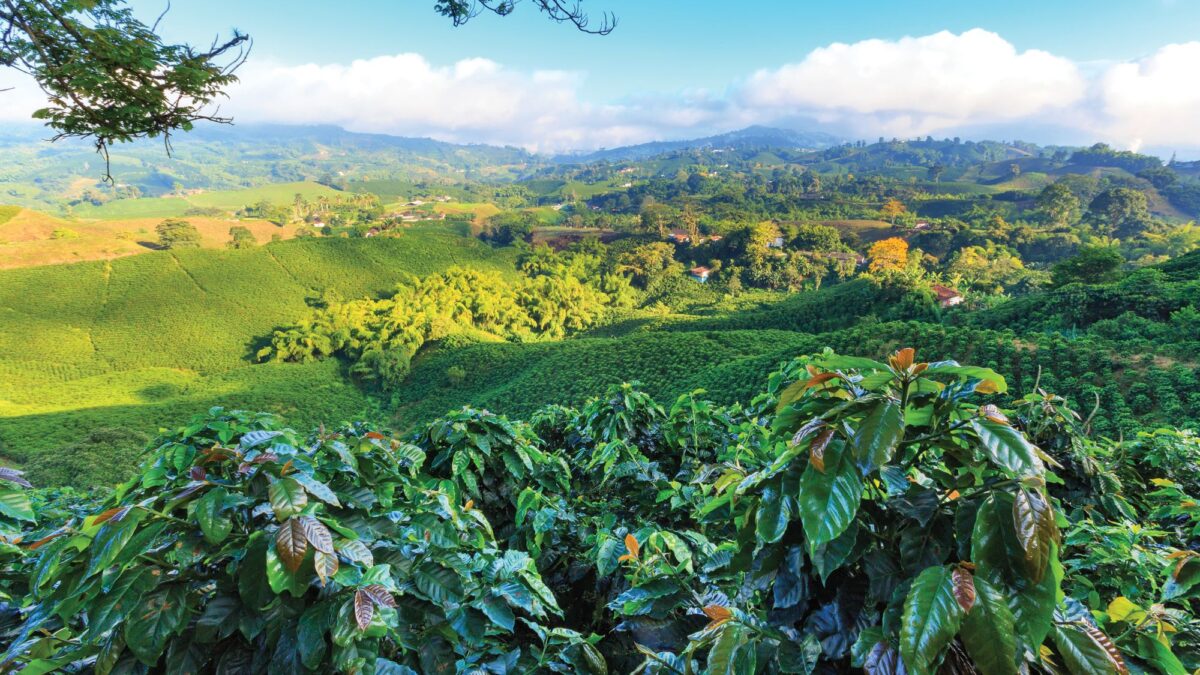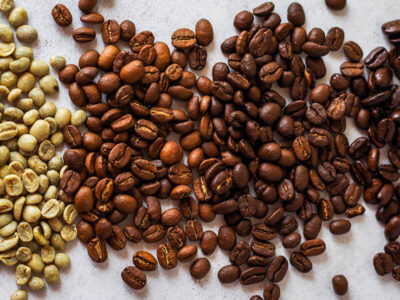
Arabica (Coffea arabica) is considered the highest quality of the three main commercial variants of the coffee plant. While the Arabica plant has the least amount of caffeine, the Arabica bean is widely considered to have the best flavor.
Arabica plants are the tallest of the main commercial varieties and grow between 12 and 20 feet high. Due to its height almost all Arabica beans are hand picked. Human coffee pickers are used to choose only the ripest beans and the growers harvest Arabica trees at least 3 times a year.
The area two main varieties of Arabica: Typica and Bourbon. From Bourbon and Typica spring the countless sub varieties of coffee plants. You’ll see these sub varieties named as “Cultivars.”
Every country and region grows different type of cultivars. While yield and quality are important, the number one factor why a certain cultivar is to answer the question “Does it grow in this area?” The coffee plant depends on many different factors to grow, soil, climate, disease resistance, etc. As a discriminate coffee consumer, you will find the most of the Arabica coffee consumed one of the cultivars listed below.
Bourbon
Among the coffee connoisseurs’, Bourbon trees are considered to produce the finest quality coffee. Bourbon Trees thrive at higher elevations. You’ll typically find them planted in elevations between 3.500 and 6,500 feet. Bourbon trees yield more fruit than Typica and the coffee cherries ripen faster, but they are far more fragile. Bourbon trees are disease prone, and require more space to plant even though the trees yield 1/3 more coffee than Typica.
Typica
Arabica Typica plants are considered the original coffee plant. The tree tend to yield lower amounts of fruit but they grow well in comparison to other varietals. A
Caturra
Caturra was discovered in Brazil and was derived from Bourbon plants. Known as a hardier plant than a typical Bourbon, it is still very high maintenance . Costa Rican coffee is almost entirely Caturra and most of the top quality coffee growing countries grow mostly caturra as well.
Blue Mountain
Blue Mountain Coffee is one of the highly prized coffees in the world. Blue Mountain Coffee is a variety of Typica beans and is know for its wonderful flavor and aroma. Among the Japanese, Blue Mountain has developed an almost cult like following where 80% of all the worlds Blue Mountain crop is shipped and packaged to Japan. You can read a more in-depth review of Blue Mountain coffee here. (Tri link to Blue Mountain article).
Catimor
Catimor is produced as a blending coffee. It’s a commercial hybrid of Arabica and Robusta coffee. This cultivar is a further development of the Timor Cultivar. Due to that fact that it grows quickly, produces high yields at lower altitudes and is disease resistant, it has become an ideal crop for farmers. You’ll find Catimor grown in countries with a lot of natural rainfall as it is a high water consumer plant.
Catuai
This is a high maintenance plant bread for countries with high winds. A derivative of Caturra and Mundo novo, it is wind resistant and can stand stormy weathers.
Maragogype
Maragoype beans are prized for their voluptuous flavor and large beans. This cultivar was developed in Brazil and is Typica descendent. Two descendents of Maragogype are very popular. Pacamara is a hybrid crossed with Paca grown in Panama. It is known for large size and prize-winning aroma. Geisha is another hybrid grown in Ethiopia that is well like as well.
Timor
Was discovered in the 1860s in the Island of Timor, Indonesia and is considered the savior of the coffee industry. It’s a cross between arabica and robusta that was particularly disease resistant during the blight of 1860. While disease resistant, many consider it just a robusta disguised as Arabica due to its tepid flavor and taste. While not the best coffee in the world, it’s disease resistance help stave off the destruction of entire coffee industry in many coffee growing countries.










